Parrots, with their vibrant plumage and captivating personalities, have long enchanted humans with their ability to mimic human speech.
The phenomenon of parrots replicating human voices has piqued the curiosity of scientists and pet enthusiasts alike. In a fascinating display of vocal imitation, these avian wonders can produce an astonishing range of sounds, including words, phrases, and even entire sentences.
This remarkable ability, however, raises the question: How are parrots able to replicate human voices? Delving into the intricate interplay of brain structure, vocal anatomy, and social interaction, this article explores the underlying factors that contribute to parrots’ uncanny vocal replication skills.
As we unravel the mysteries behind their linguistic feats, we gain a deeper appreciation for the complexity of animal communication and the intricate connections between species in the animal kingdom.

How Are Parrots Able to Replicate Human Voices?
Parrots’ ability to replicate human voices has long fascinated researchers and pet enthusiasts. This unique skill involves a combination of cognitive, anatomical, and social factors that come together to enable these avian marvels to imitate human speech.
Complex Vocal Learning Mechanism
Parrots possess a remarkable capacity for vocal learning, which is a rare trait in the animal kingdom. This ability allows them to mimic a wide range of sounds, including human speech.
Their brains, particularly the part known as the “song system,” are highly developed and exhibit similarities to the brain structures of humans responsible for speech production.
Flexible Vocal Tract
One of the key anatomical features that contributes to parrots’ ability to mimic human voices is their flexible vocal tract. This tract consists of various structures, such as the syrinx, which is the avian equivalent of the vocal cords in humans.
Parrots can manipulate these structures to produce sounds that closely resemble human speech patterns.
Social Interaction and Imitation
In the wild, parrots are social creatures that engage in vocal communication as part of their social interactions. Their inclination to mimic sounds, including those of other birds and environmental noises, serves as a form of bonding and learning.
When parrots are raised in environments with human speech, they naturally incorporate those sounds into their repertoire through observational learning.
Sensitive Auditory Skills
Parrots have finely tuned auditory abilities that allow them to accurately perceive and replicate the nuances of sounds, including human speech.
Their acute hearing helps them discern the subtleties of pitch, tone, and rhythm, facilitating their ability to mimic spoken language with impressive precision.
Repetition and Reinforcement
Parrots are skilled imitators due to their persistence and penchant for repetition. When they mimic a sound and receive positive feedback, such as attention or treats, they are incentivized to continue reproducing that sound.
Species Variability in Imitation
Different parrot species exhibit varying levels of aptitude for vocal imitation. Some species, like the African grey parrot, are renowned for their exceptional mimicry, while others may have more limited abilities.
Factors such as brain structure, social behavior, and exposure to human speech during critical developmental periods contribute to this variability.
Why Do Parrots Imitate Sounds?
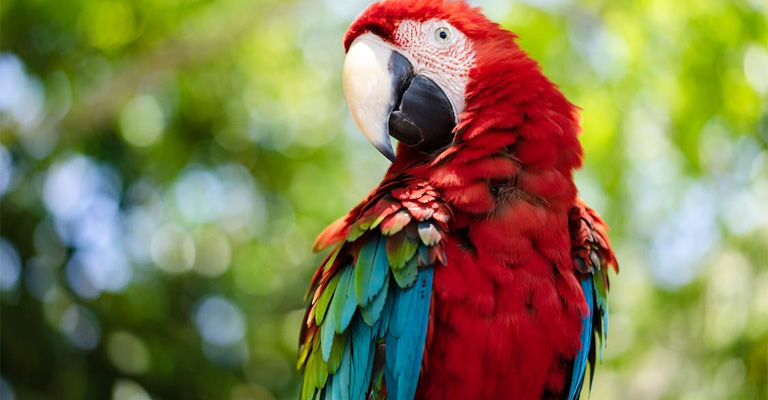
Parrots imitate sounds for a combination of reasons rooted in their evolutionary history, social behaviors, and cognitive capabilities. This intriguing behavior serves various purposes that contribute to their survival and interactions within their environments.
Social Interaction and Bonding
In the wild, parrots are highly social creatures that live in flocks. Vocalization is an essential means of communication within these flocks.
By imitating the calls and sounds of other parrots, as well as environmental noises, parrots can establish and maintain social bonds, coordinate group movements, and signal potential threats.
Learning and Adaptation
Parrots are known for their ability to adapt to changing environments. By imitating sounds from their surroundings, they learn about their habitat, the presence of predators, and the availability of food sources.
This adaptive behavior enables them to navigate their environment more effectively and make informed decisions that enhance their survival.
Species Recognition
Different parrot species have distinct vocalizations. By imitating the calls of other species, parrots may gain insight into the presence and activities of neighboring species.
This knowledge helps them avoid conflicts and competition, contributing to harmonious coexistence within their ecosystem.
Mimicking Conspecifics
In the context of a human household or an aviary, parrots may imitate the sounds of humans or other animals they share their environment with.
This imitation can be a form of mimicry for social integration, as they attempt to fit in and communicate with members of their adopted social group.
Reinforcement and Attention
Parrots are intelligent creatures that learn through positive reinforcement. When they imitate sounds and receive attention, praise, or treats from humans, they associate imitation with rewards.
This encourages them to continue mimicking sounds, including human speech, in order to elicit favorable responses.
Enrichment and Stimulation
Parrots are naturally curious and active animals. Mimicking sounds provide mental and sensory stimulation, preventing boredom and promoting mental engagement.
In captive settings, where they may lack the diversity of stimuli found in the wild, imitating sounds helps keep their minds active and engaged.
Vocal Territory Establishment
In some cases, parrots may imitate the sounds of other birds as a way to establish territorial boundaries. By mimicking the calls of a potential competitor, they may deter intruders from entering their established territory.
Other Birds That Mimic Human Speech
While parrots are perhaps the most famous for their ability to mimic human speech, there are a few other bird species that also demonstrate impressive vocal imitation skills. Here are some notable examples:
Lyrebirds
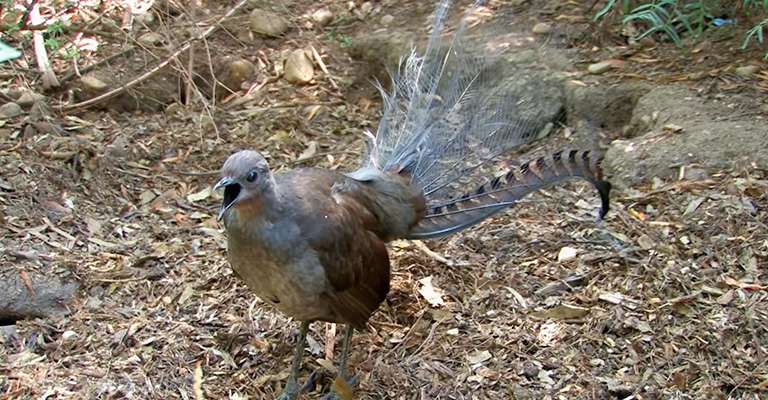
Found in Australia, lyrebirds are renowned for their exceptional ability to mimic a wide range of sounds, including chainsaws, camera shutters, car alarms, and human speech.
Male lyrebirds incorporate these imitations into their elaborate courtship displays to attract females.
Hill Mynas
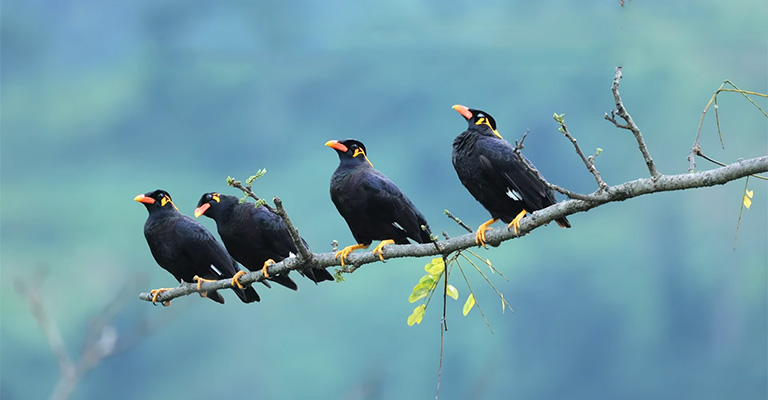
Native to parts of Asia, hill mynas are members of the Starling family known for their clear and melodious imitations of human speech. They often pick up phrases and sounds from their environment and can reproduce them with surprising accuracy.
Common Mynas (Indian Mynas)
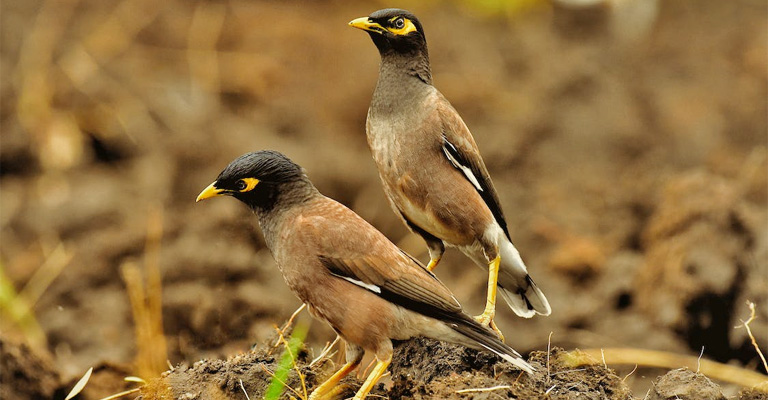
Also a type of starling, the common myna has earned a reputation for its mimicry abilities. This bird is found in various parts of the world and is known to mimic not only human speech but also a range of environmental sounds and other bird calls.
European Starlings
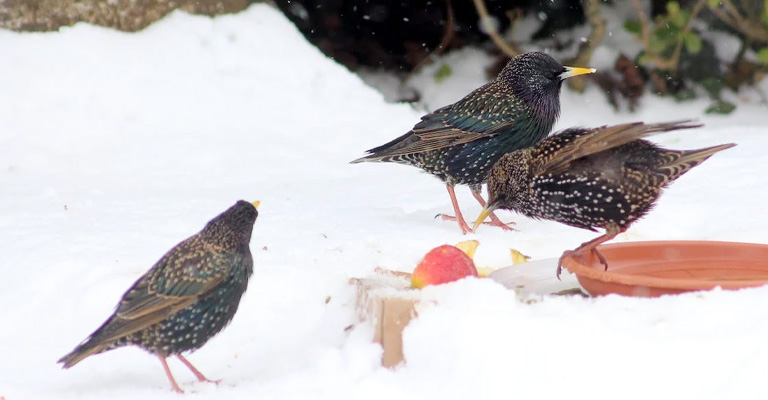
In addition to their remarkable synchronized flying displays known as murmurations, European starlings possess the ability to mimic various sounds, including human speech.
Their mimicry tends to be less precise compared to parrots, but they can still produce recognizable phrases and noises.
Superb Lyrebirds
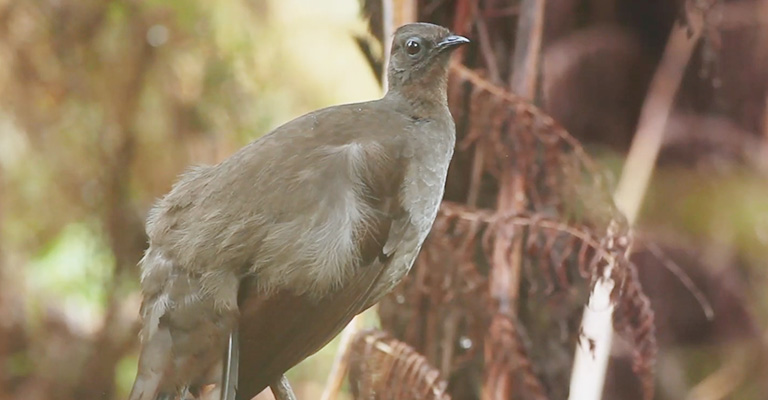
Another lyrebird species found in Australia, the superb lyrebird is capable of mimicking chainsaws, camera shutters, and even the calls of other bird species. These imitations are often incorporated into their elaborate and complex vocal displays.
Mockingbirds
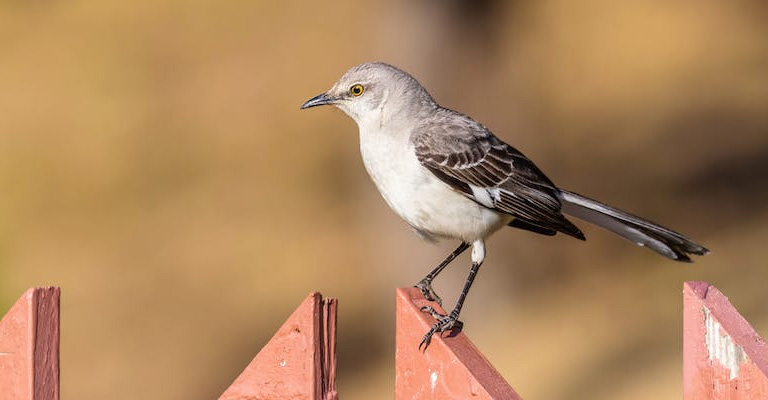
As their name suggests, mockingbirds are known for their ability to mimic a variety of sounds, including the songs of other birds, as well as human-made sounds such as car alarms and sirens.
Northern mockingbirds, found in North America, are particularly famous for their vocal versatility.
Can All Parrots Replicate Human Sounds?
While many parrot species have the potential to replicate human sounds to some extent, not all parrots are equally adept at mimicking human speech.
The ability to replicate human sounds varies widely among individual parrots and even among different species. Several factors influence a parrot’s ability to imitate human sounds:
Species
Some parrot species are more renowned for their imitative abilities than others. For example, African grey parrots are often considered among the best mimics in the parrot world, while species like Amazon parrots and budgerigars are also known for their capacity to imitate human speech.
Individual Variation
Just as humans have individual differences in their talents, parrots also vary in their abilities.
Some parrots within the same species might excel at mimicry, while others might not show as much interest or skill in imitating sounds.
Learning Environment Parrots raised in environments where they are regularly exposed to human speech, such as in households, are more likely to attempt and succeed in mimicking human sounds.
Their learning environment and exposure to such sounds play a significant role in shaping their mimicry abilities.
Age of Exposure
Young parrots who are exposed to human speech during critical developmental periods are more likely to incorporate those sounds into their vocal repertoire.
Parrots that are exposed to human speech from a young age tend to have a better chance of learning and imitating those sounds.
Motivation and Reinforcement
Parrots are more likely to imitate sounds that garner attention, praise, or rewards from their human caregivers. Positive reinforcement can encourage them to continue mimicking certain sounds.
Anatomical Differences
While parrots possess flexible vocal tracts that contribute to their mimicry abilities, there might still be variations in individual anatomy that affect their capacity to produce certain sounds accurately.
Natural Vocalizations
Parrots have their own distinctive calls and vocalizations that they use for communication in the wild. Their mimicry of human sounds might also involve incorporating those sounds into their existing repertoire of vocalizations.
FAQs
No, not all parrot species have the same aptitude for replicating human speech. Some species, like African grey parrots, Amazon parrots, and budgerigars, are known for their exceptional mimicry skills.
Yes, parrots can mimic languages other than the one they hear most often. While they may be exposed to a specific language in their environment, they can still imitate sounds and phrases from other languages, as long as they are exposed to those sounds.
In most cases, parrots do not fully understand the words and phrases they mimic. They imitate sounds based on their auditory perception and the reinforcement they receive.
Yes, parrots can mimic a wide range of non-human sounds, including musical instruments, animal calls, phone ringtones, and even the sounds of household appliances. Their ability to imitate sounds extends beyond human speech.
Parrots have been observed to continue learning new sounds and phrases throughout their lives, although there might be some limitations based on individual factors such as age, health, and environmental enrichment.
Younger parrots tend to be more adaptable and capable of learning new sounds.
Bottom Line
In the intricate world of animal communication, parrots stand as exceptional linguists, blurring the boundaries between species.
Their knack for mimicking human voices not only brings joy to households and aviaries but also serves as a testament to the remarkable adaptability of nature.
Through their vocal feats, parrots remind us of the rich tapestry of life on Earth and the endless surprises it holds.
As researchers continue to study these captivating creatures, we are bound to uncover more insights into the mechanisms that facilitate their unique abilities.
From the lush rainforests to the cozy corners of our homes, parrots serve as a living embodiment of the beauty of diversity and the extraordinary capacities of life to evolve in astonishing ways.
So, the next time you hear a parrot flawlessly utter a familiar phrase, take a moment to marvel at the intricate connections that weave together the natural world.